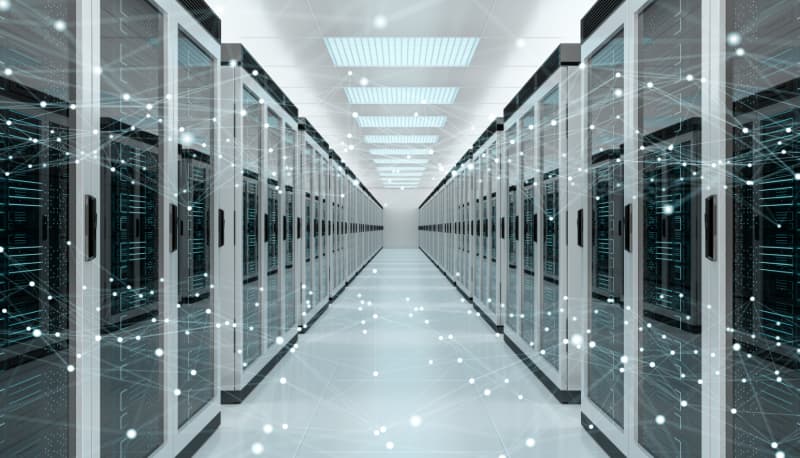5G, edge computing and the new wave for data centers
The COVID-19 pandemic dramatically impacted traditional working practices. With the future of the office looking uncertain, organizations of all sizes have been turning to modern IT solutions to keep their operations running, their teams connected and their costs in check.
Data centers are at the very heart of this evolving landscape and are responding quickly to changing appetites and requirements, offering additional services and enhanced hybrid cloud solutions to ensure they remain relevant.
We take a look at the top data center trends for the coming year and examine the importance of data centers for an increasingly popular hybrid infrastructure and multi-cloud strategy.
1. Hyperscaler demand is driving colocation data center growth
In the past few years, many providers have been trying to find ways of accommodating data growth demands by building new data centers to meet hyperscalers’ specific requirements; which is perhaps not surprising when 70% of hyperscale data centers are housed in facilities leased from other operators or owned by ‘partners’.
The expanding nature of data and computing requirements for hyperscalers such as Alibaba, Microsoft, AWS, or Google has changed the traditional data center services, pushing for more flexible, scalable, and reliable models that could meet the end-to-end data requirements of hyperscalers around the world. As businesses adapted to sweeping digital changes throughout 2020, there was a continuous increase in the demand for data centers and colocation services.
While hyperscalers’ demand will continue to drive data center behavior in 2021, there will be a specific emphasis on third-party providers offering tighter security and control of data governance, the ability to increase capacity, and reach non-traditional geographies that the hyperscalers would otherwise find hard to penetrate and get control of.
2. Data-driven monitoring – utilizing machine learning for better data analysis and failure prevention
The outcome of the fast transition to the cloud, the growing popularity of IoT devices, and the digital transformation that has seen an uptake in communications and collaboration services demand over the past 12 months are, of course, more data.
The huge amount of data being generated needs both somewhere to be stored, and some way of being proactively monitored. For this reason, we can expect data centers to utilize emergent technologies such as machine learning and AI to support their operations, including identifying and fixing potential failures, predicting future failures and operational bottlenecks, and take the appropriate evasive actions.
Data centers that leverage the power of intelligent monitoring systems generally have several advantages over those that don’t. While their servers exhibit far superior uptime, AI-driven monitoring also gives operators a deeper understanding of their infrastructure, so they can tweak and adapt for optimal performance. The end customer benefits massively from these insights, and also enjoys access to a wider array of useful data and more nuanced, immediate control over every aspect of their servers and networks.
Digitalization is happening across all industries and workloads, and data centers will want to keep pace with the changes. The ability to collect, store, secure, analyze and act on the vast amounts of telemetry data being generated in the digital economy is what will ensure data centers remain relevant going forward.
3. Automation – emergent technology enabling evolving benefits of robotics
Modern automation platforms can handle most server operations, from component inventory and registration to instant hardware replacement in the event of malfunctions. We can expect data centers to invest heavily in automation designed to reduce costs and increase operational effectiveness and efficiency in the long term.
Automation will help data centers tackle a long-running staffing issue, which has been exacerbated in the wake of COVID-19. A shortage of qualified staff across the data center industry has caused headaches for years, from security issues to maintenance problems. When coronavirus hit, on-site staffing dropped by 75%, complicating matters and adding human-error issues to the mix.
The pandemic has accelerated the need to make systems less reliant on human intervention, and we can expect to see robotics playing a larger role in facility management and automation that deals with network and storage configurations proliferating as data center operators prioritize the health of their teams and seek to solve all staffing issues, create better site efficiency, reduce costs and streamline processes.
While the idea of robotics fulfilling the needs of the industry is certainly evolving, there is still a long way to go to develop the knowledge, trigger the wider adoption and enable a cultural shift to embrace such technology in data center operations.
4. The 5G game and the future of data centers
Perhaps the biggest transformative data center trend for 2021 will be the wider rollout of 5G. 5G will enable advances in AR, VR, and AI solutions for businesses and individuals, sweeping in extraordinary changes for businesses and life in general. Alongside the impact 5G will have in our lives, it will also be a catalyst for change and network transformation, as well as upgrades in computing and wider technology infrastructure.
While some of the 5G architecture will become virtualized, part of it will need to utilize hardware colocation, converging the radio access network into the data center space. This not only means that the data center demand will increase to accommodate more data, but it also sets off the stage for regulatory, security, and infrastructure issues to be tackled and resolved before 5G can be seamlessly deployed.
5. Edge computing – co-evolving with 5G and innovative technologies
Traditionally, the multi-tenant data centers have been at the core of enterprise operations alongside connectivity. The new demands arising from the maturing technologies like AI and the proliferation of IoT, place compute requirements and data analytics closer to where the data is and drive the need for real-time computing power.
The evolving nature of data and edge computing will impact the need to collocate data closer to the data source, meaning that a number of smaller data centers will emerge. A network of distributed hubs that could serve the proximity needs for edge computing and 5G applications will most likely change the way traditional data center infrastructure models have served enterprises locally and internationally.
The future of data centers – no longer just about the rack space
There is a huge opportunity for both organizations and colocation providers as the digitalization of the office continue apace and IoT devices permeate every facet of our lives.
Businesses will require support services to manage hybrid environments and improve latency, hyperscalers will want commercial flexibility, enhanced resilience, and security, while operators will be looking to accommodate the continuous demand for edge and automation, tackle old infrastructure and optimize operating models with automation and real-time analytics.
Responding quickly to the new trends and changing customer requirements, with resilience, agility, and commercial innovation is no longer optional. Data centers and colocation services are here to stay for the foreseeable future and providers and businesses will be driving technology forward over the upcoming years.
For more about our data center presence internationally, colocation, and hybrid cloud services get in touch with our team today.





